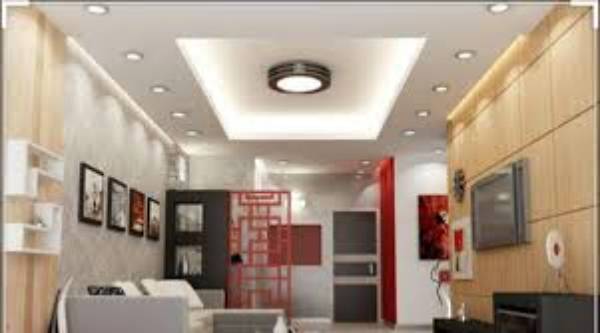An example of an LED light is a COB light or COB for Chip-On-Board. An array of LED chips that are closely spaced apart and bonded to a substrate, such as silicon carbide, is essentially what COB lights are.
In essence, this results in the creation of a sizable LED chip with excellent brightness uniformity, which makes it perfect for photographers and filmmakers.
What Is A COB Light
The abbreviation COB stands for Chip On Board. The packed LED chips mounted in close proximity to a silicon carbide or sapphire substrate are referred to as the technology behind COB lights. LEDs are highly concentrated using COB technology on a small surface, such as a chip., there are 342 LEDs on a 10mm x 10mm surface).
The source of light is continuous with a COB light. It’s a particular kind of LED light that you can put anywhere and it will illuminate the object for a long time. It is portable and can be carried around, held, mounted on a light pole, or left inside the studio.
A COB light enables long-term setup preservation while allowing you to adjust the light’s direction and intensity as desired.
A COB light is essentially a panel of tightly packed LED chips. The LED chips are so small that there isn’t any visible space between them. A COB light consequently emits a consistent, intense beam of light.
Don’t worry; you can use accessories to soften the light and reduce its intensity.
Features Of COB Lights
- Ultra slim: The thickness of PCB boards can range from 0.4mm to 1.2mm, depending on the needs of the client. Comparing it to conventional LED displays, this results in a weight reduction of about a third. Therefore, it might assist in reducing the price of transportation and project steel structure.
- Crush and anti-collision resistance: For COB LEDs, the LED chip must be enclosed on the PCB board and then solidified with epoxy resin glue. The surface would become sphere-shaped and become anti-collision.
- Big view angle: The angle of the view is roughly 180 degrees.
- An efficient heat transfer: The LED lamp on the PCB board will be enclosed by the COB LED. With the help of the copper foil on the PCB, heat could be easily dissipated. Additionally, the PCB copper foil’s thickness is strictly required. No significant luminance attenuation results from the addition of immersion gold technology. Therefore, it might increase the LED display’s lifespan.
- Easy to clean: If the COB LED is dusty, it only needs to be cleaned with water and a cloth.
- It is dustproof, anti-static, anti-corrosion, waterproof, damp proof, and anti-oxidation. Additionally, it may function flawlessly in temperatures as low as -30°C or as high as +80°C.

Advantages Of COB Lights
- Greater thermal resistance (especially when paired with a LED heatsink)
- Compact
- High light efficiency
- Better lighting effect
- Larger cooling area
- For power, they require a single circuit with two contacts.
- Lower rates of failure due to fewer amount of welding points
- Strong anti-vibration capabilities
Disadvantages Of COB Lights
- Limited amount of colors
- The size of the chip has an impact on light efficiency.
When Are COB Lights Used
A COB light can be used whenever you require a steady source of light, including for both photography and videography.
It might be used to take family portraits or pictures of models for a fashion magazine. Alternately, COB lights can be used to illuminate objects, food, or still life.
Commercial photographers who want to get rid of shadows and take sharp pictures frequently use the bright, uniform spot of light.
What Is The Difference Between COB And Led
An example of an LED light is a COB light. As a result, the real distinction between a COB light and another type of LED light, like LED panels, is between them. Most of the time, an LED panel is an SMD (Surface Mounted Device) LED light.
More diodes and a less complex circuit design are found in COB lights, which result in a compact light. A LED panel, on the other hand, resembles a jumble of tiny lights and has more complicated circuitry and fewer diodes.
A COB light can also be bigger and heavier than this.
There are other differences besides the design and appearance. Compared to an SMD light, a COB light is more energy and heat efficient. It can generate more lumens with less energy, producing a brighter light (e.g., SMD lights generate between 50 and 100 lumens per watt, whereas COB lights start at 80 lumens per watt.
But unlike LED panels, it is unable to produce colored light or color-changing effects. When it comes to color temperature, SMD lights have more options.
Due to its uniform illumination in all directions, an SMD light can be used as a point light. However, a COB light is preferable as a top light to illuminate the subject or a surface from above because it emits a uniform beam of light.
What Is The Difference Between COB And SMD
The most popular LEDs available right now are SMD (surface-mounted device) LEDs. They could be regarded as COB LEDs’ forerunners.
In that they don’t require direct contact with wires, SMDs are similar to COB LEDs. Instead, they operate by means of tiny metallic contacts. A PCB substrate is connected to the LED chip.
Typically, the PCB is shaped like a square or rectangle. The location of the LED chip on the SMD can be used to identify it. In the center of the PCB, it appears to be a small black point. The following sizes of SMDs are available: 2835 (2.8 x 3.5mm), 3030 (3.0 x 3.0mm) and 3014 (3.5 x 2.8mm). The sizes 5050 (5.0 x 5.0mm) and 5630 (5.6 x 3.0mm) are also available.
One of the best things about an SMD LED is that it can produce almost any color when it contains an RGB (red, green, and blue) diode.
For this reason, SMD LEDs are used in mobile phone hardware. Additionally, we also use SMD LEDs and specialized light bulbs in strip lights.
The first difference is that COB LEDs have nine or more diodes, whereas SMD LED chips to have up to three diodes with a circuit connected to each.
A cathode and an anode are present in every SMD LED light circuit. Unlike COB LED modules, which have every diode wired into a separate circuit. The light coming from an SMD LED module appears to come from various sources a result.
The light coming from a COB LED, on the other hand, resembles illumination from multiple, connected light sources.
The SMD LED module benefits from this as well, though. In order to use RGB diodes in color-changing bulbs, this enables it to contain them. SMD LED modules are also very bright. They are capable of producing 100 lumens per watt.
Still, COB LEDs excel in applications requiring only one color. Additionally, compared to SMD LEDs, they give you better lumen-to-watt ratios. Additionally, they use less energy to do it.
How Long Do COB LEDs Last
A COB LED’s lifespan is usually expressed in years rather than months. One such model is the 5,000-hour Cree XP-E2. Additionally, it is intended to have an average CRI of over 90 and a very high lumen output of 2700 lumens.
However, it is highly likely that the lifespan will be less than what is indicated on the product label.
